AMAZON multi-meters discounts AMAZON oscilloscope discounts
No. 130: TRANSMITTER OR RECEIVER, RF TYPE
Without exception, all remote control systems consist of two main parts-the transmitter and the receiver. In an RF-type remote system, such as is used in controlling aircraft flight, robot controls that are some distance from a transmitter, dynamite blasts and the like, trouble develops in the transmitter or receiver, but not ordinarily in both.
It is necessary to localize the problem to one or the other of the units (Fig. 89 ). A field strength meter that can tune to the transmitter frequency will isolate the problem to one unit or the other. Simply turn on the transmitter and take a reading on the FS meter. If a normal microvolt level is being received, the transmitter is fine and the receiver, by elimination, has a problem. Conversely, if the field strength meter does not record a normal output from the transmitter, then the transmitter is at fault and the receiver is probably good.
No. 131: TRANSMITTER OR RECEIVER-AUDIO TYPE
While the RF transmitter type of remote control is quite well known, there are just as many audio type remote transmitters around, such is found in remote controlled TV (Fig. 89). An audio transmitter is quite similar to the RF type, except for the operating frequency and its actual output. While the RF type transmits radio waves of various high frequencies, such as 465 MHz and 27 MHz, the audio transmitter sends out sound waves, such as those between 35 and 45 kHz. Such frequencies are above the human hearing ability, which reaches only 20 kHz as the upper limit, generally, but are still sound waves. In an audio-type transmitter, instead of an antenna that radiates RF, a transducer changes the electronic 40-kHz signal to a mechanical 40-kHz sound wave which travels toward the receiver.
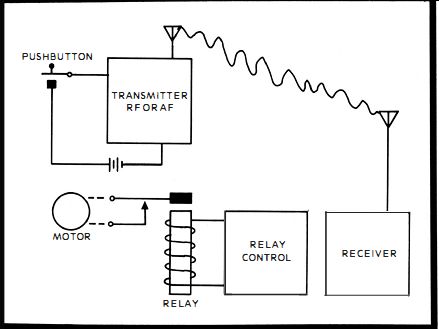
Fig. 88. The typical remote control transmits a signal and closes a relay
to start a motor.
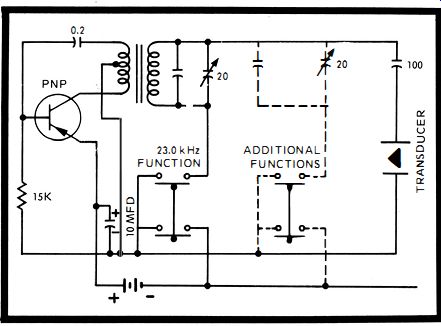
Fig. 89. The transmitted wave ca n be in the audio range. It is produced by
a transducer which creates sound waves in the air.
The transducer is basically a capacitor-type microphone with metalized mylar plates. The signal causes the plates to vibrate at 40 kHz, which creates the sound wave. In the receiver, an identical transducer "hears" the 40-kHz waves and its plates respond sympathetically. As the plates are moved by the audio waves, the capacity is physically changed in direct proportion and the DC potential in the circuit is modulated. The 40-kHz signal is then processed in the receiver.
When problems arise and it's necessary to determine if the problem is in the transmitter or receiver, an audio generator that can be tuned near the output frequency is needed ; typically, a variable zero to 50-kHz type. The generator is substituted for the transmitter and turned on: If the receiver responds normally, the transmitter is isolated as the trouble maker. Should the receiver still not perform, the transmitter is probably good and the receiver contains the trouble.
Remote control systems can be as simple as one circuit in the transmitter and one circuit in the receiver. On the other hand, a remote control system can be complex almost beyond belief, such as is found in the remote control systems used in drone aircraft, bombs, and space probes.
No matter how simple or complex, they all perform a similar function. An operator presses a button, rotates a potentiometer, a variable ,capacitor, flicks a switch or some similar motion and somewhere else a form of motor turns on and moves an aileron, fires a rocket, explodes a bomb, turns on a TV camera and so forth. It's all basically a switch that turns on a remote type of motor. The transmitter and receiver can be in the same room, so you may change TV channels without arising from the chair, or the transmitter and receiver can be 50 million miles away as a space probe lands on Mars. Usually, the audio type remote is in the same room and the RF type is separated by such a distance that an audio system is not strong enough.
A fairly complex remote control system that the electronic hobbyist will possibly encounter is found on color TVs. Remote TV controls perform all kinds of functions can do ten jobs or more. Also, the same principles exist in other remote control units. If you can test and understand this type of remote, the others you will possibly come into contact with are simpler and this experience will almost assure you an understanding of them. The typical color TV remote system usually has a transducer output, although some do transmit in RF signal out of a tiny antenna system.
Remote Control Transmitter
A typical TV remote control transmitter is hand held and is no larger than a pack of cigarettes. It can produce eight functions. Each function occurs because the transmitter is sending out eight different audio frequencies.
The transmitter oscillator transistor collector is connected to the power supply through the primary of a step-up transformer. The negative side of the battery is attached to the collector circuit. This means electrons flow from the battery to the collector and then to the base and emitter. The 0.2-mfd capacitor couples some feedback from the collector circuit to the base in order to sustain oscillation. In the secondary of the transformer, there are a number of tank circuits tuned to the desired frequencies. A transducer turns the frequencies produced into audio air waves. When any of the function buttons are pressed, the negative end of the battery is connected into the circuit. Collector current flows from the battery into the transistor. The rising current induces a stepped up voltage in the secondary of the transformer which is tuned in accordance to the choice of tank circuits as chosen by the button pressed.
A negative-going feedback pulse is simultaneously coupled from the collector circuit to the base. The base draws electrons from the collector and charges the capacitor. As the transformer voltage arrives at its correct level, the feedback pulse ceases. The charge on the capacitor turns off the transistor as it reverse biases the base-to-emitter junction. The tank circuit rings and sends another negative-going pulse, through the transformer, through the capacitor, to the base and turns on the transistor again. The cycle keeps repeating itself at the proper frequency as long as the button is being pressed.
The secondary of the transformer is tuned to 23 kHz, the highest desired frequency that the oscillator is called on to produce. Actually, 46 kHz is transmit ted when the oscillator is running at 23 kHz. That's because this transducer, by its very nature, doubles any frequency it has to radiate.
With a voltage difference applied between them, a transducer's plates are pulled toward each other. Therefore, on the positive half cycle, the plates are pulled towards each other. Then, when the frequency passes through zero, the plates return to their at-rest position. When the negative half cycle occurs, they are attracted towards each other again. At zero they go back to their rest position. There are two transducer beats during each full cycle or Hertz. Twenty three kHz in the oscillator produces 46 kHz transducer output. The same thing is true for all the other oscillator frequency outputs. On an 8-function transmitter such as this one, there are, of course, eight buttons or switches. Each but ton connects a different tank circuit in parallel with the tuned secondary of the transformer. As each button in turn is pressed, more capacity is added to the tuned circuit. The additional capacity lowers the resonant frequency; therefore, each button lowers the transmitted audio frequency. For instance, the third button might cause 21 kHz to ring in the oscillator. The transducer doubles it and radiates an audio tone of 21 times 2, or 42 kHz.
The transformer has a large step-up turns ratio from primary to secondary. As a result, the swiftly falling and rising magnetic field in the primary induces a very large peak-to-peak voltage in the secondary. The peak-to-peak amplitude has to be high in order to drive the transducer ; it can be as high as 1000 volts.
Battery life is almost as long as if the battery were sitting on a shelf losing energy as it ages. This is because current is drawn only momentarily as the button is pushed, connecting the battery and a tank circuit into the collector and secondary, respectively. A burst of audio energy is transmitted and the button released. The amount of energy actually drawn from a 9-volt mercury battery is an instantaneous 10 ma, resulting in little wear to the battery.
No. 132: TRANSMITTER SUBSTITUTE TEST
It is quite obvious, yet lots of times completely overlooked, that if a transmitter is suspect, and another identical "known good" transmitter is near at hand, the suspicion can be easily confirmed or denied. Yes, try the good transmitter and see if it performs. If it does, the suspect transmitter is definitely defective. When it doesn't, the suspect transmitter is exonerated and the trouble is probably in the receiver.
No. 133: TRANSMITTER BATTERY TEST
The best test for the 9-volt battery is replacement ; however, this is not always possible immediately. Therefore, before taking a trip to purchase a new battery, test the battery quickly for output.
Do not test the battery out of the circuit. Leave it connected. Attach your voltmeter probes across the battery and take a reading without pressing a button. The battery should read the full 9-volt rating. If it doesn't, it is defective, no matter what the reading is.
Leave the battery and voltmeter connected and start pressing buttons. Hold a button down and observe the reading. Under the load, the battery should read about seven or eight volts. If it reads lower, it is weak. The lower it reads the weaker it is. If it reads the full nine volts, the battery is probably good and the transmitter is defective. It is not drawing any current.
No. 134 : TRANSMITTER OUTPUT TEST
The remote transmitter develops a large signal across its antenna or transducer, according to the type of output. Typically, in the remote transmitter we have been discussing a large peak-to-peak signal is applied across the transducer.
The signal can be measured with the p-p scale on the VTVM or directly displayed on the oscilloscope (Fig. 90). Simply attach the VTVM or scope across the transducer. A large multi-hundred volt peak-to-peak pulse as each button is pressed indicates the transmitter is producing an adequate signal. Little or no signal as the buttons are pressed indicates one or more of the circuits is not operating. If one button produces no signal, while all the rest do, then the circuit associated with the button is indicated as being defective.
No. 135: TRANSDUCER TEST
Again the best test for a transducer is substitution, but lacking that ability, another test is quite good. The transducer produces a high, beyond human hearing sound wave. However, the sound wave is not beyond the reproduction ability of the ordinary scope. The scope can actually "hear" transmitted frequencies in the air and cause a display.
When the transmitter has been proved good by the previous test and there is still no output, the transducer is suspect. Turn the vertical scope amplitude up to its highest point. Place the transmitter's output or transducer less than an inch away from the vertical input of the scope. Then, start pressing buttons. If the transducer is good, the scope display will shoot up to an off-the-screen amplitude each time a button is depressed.
When the scope does not respond, and all other parts of the transmitter are deemed good, the transducer is indicated as defective.

Fig. 90. The transmitted audio wave can be observed by connecting an oscilloscope
across the transducer.
No. 136: TRANSMITTER DEFECT TEST
When test No. 134 is performed and no output is produced across the transducer, a defect in the transmitter circuits is indicated. Connect the scope or VTVM p-p scale across the transducer and series capacitor. Then start pressing buttons. About twice as much p-p voltage should be present as is supposed to be across the transducer by itself. For instance, if the transducer voltage is supposed to be 300 volts p-p, then across the transducer and capacitor there should be 600 volts. If the 300v isn't on the transducer but the 600v is present, the series capacitor is defective. Go no further ; substitute a new 100-pf capacitor. Should the 300v not be across the transducer as the buttons are pressed and also absent across the two components, then the capacitor is good and the trouble is further on in the circuit. The transistor then becomes the prime suspect; therefore, a check of the other circuit components is in order.
No. 137 : TRANSMITTER ALIGNMENT
Transmitter alignment is easy. Each resonant circuit can be aligned with the separate trimmer capacitor in the tank circuit. Addition of and substitution of small amounts of capacity puts the frequency right on.
With either a known good transmitter or a 0-50 kHz audio generator, a scope pattern is obtained at the highest frequency the transmitter is supposed to transmit. The alignment frequency is displayed on the scope by placing the generator or the known good transmitter near the scope input probe (Fig. 91). The known good transmitter can produce the scope display by pressing its highest frequency button. The generator emits a continuous wave.
The transmitter to be aligned is also placed near the scope input probe and its button pressed. With the two frequencies displayed, the trimmer is adjusted for zero beat. Then the lower frequency trimmers can also be adjusted in the same way by zero beating them against a frequency you know is correct. Always start out with the highest frequency and work down towards the lowest frequency.
The Remote Control Receiver
The signals from the transmitter are picked up by an antenna or transducer in the receiver. This is identical to the way a radio works. The signal is amplified and further processed, then fed to a relay. In a radio the signal is fed to a speaker. That is the main difference between a remote control receiver and a radio receiver.
The relay opens or closes in accordance to the directions of the signal and turns on a motor (Fig. 92). The motor could be electric or a wound-up rubber band as in a model airplane. (Fig. 93 ). The electric motor can turn a potentiometer, a tuner or a rudder on a boat or airplane. It can turn a steering wheel, apply brakes or push an accelerator.
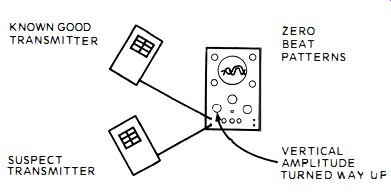
Fig. 91. The frequency of a transmitter can be checked by zero beating it
with a second transmitter.
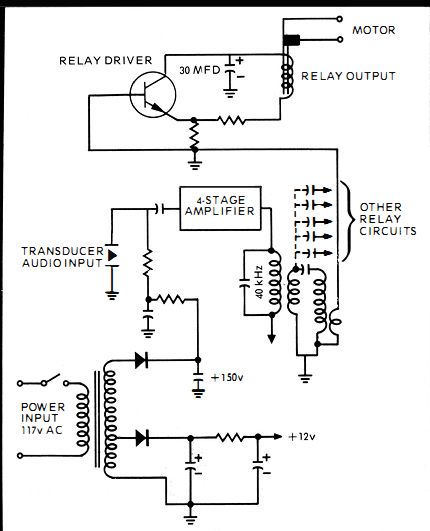
Fig. 92. Some remote control receivers are large, although the circuitry itself
presents nothing unusual.
The rubber band motor, which is simply a stretched rubber band wound tautly many times, can unwind a few turns by a withdrawal of a brake as the relay is actuated. The uses of the remote control actuated relay is limited only by the imagination. Remote control units can range from the very simplest type of thing to enormous complexity.
The remote transmitter just discussed uses a different frequency for each function. In the above unit there were eight functions. What it all amounts to is eight separate trans-missions all jammed into one small package. It's analogous to having eight small radio stations, each with a different frequency, and each being able to transmit independently of the other. There are also other ways to transmit a number of functions.
In an RF-type transmitter, a single frequency could be transmitted and eight separate tones could be used to modulate the RF. Each time a button is pressed a different tone would modulate the carrier. For instance, if the carrier wave is 27 MHz, it could be modulated with eight" tones. Typical tone frequencies could be 1 kHz, 2 kHz, 3 kHz and so forth.
The receiver would be tuned to receive the single frequency of 27 MHz. The RF would be amplified and then a detector, just like in a radio, would reproduce the tones, which would be fed to the relay control circuits. The circuit tuned to a detected tone would respond and actuate the relay and turn on the motor.

Fig. 93. A relay control led rubber-band motor can be slowly unwound by repeated
movement of the relay.
In the same way, other means of transmission have been devised. A popular one is the transmission of square wave pulses, which are used to modulate a single RF frequency. A square wave is applied to the RF by turning the transmission off and on at high speeds. The pulse length is varied by the transmitter turn-on and turn-off rate. A long pulse is a dash and a short pulse is a dot in Morse code. You can talk to the remote control receiver with dots and dashes and it will perform a job to your wishes. Dots activate one relay, dashed another and an in-between pulse still another.
In model airplanes, dots and dashes can make one relay move a rudder. Dots can cause the rudder to move to the left, dashes to the right and in-between pulses keeps it at dead center. If you want further model airplane information, refer to a book on the subject.
Getting back to the remote control receiver, the 8-function receiver that matches with the transmitter discussed uses a transducer, identical to that found in the receiver, as a receiving device. Of course, an RF type receiver uses a tuned antenna circuit.
The transducer vibrates sympathetically with the transmitted sound waves. The B+ voltage applied to the transducer is approximately 150 volts DC. As the plates of the transducer vibrate, the capacity in the circuit is changed and the modulation is developed in the DC and transferred across a blocking capacitor into a broadband amplifier stage. The signal is amplified and then fed into three or four more such stages.
The eight frequencies range from 35 kHz to 46 kHz. A tuned transformer at the end of the amplifier stages, which resonate around the 40-kHz center frequency, picks off the amplified signal. The transformer then injects the signal into eight identical relay driver transistors. The coupling between the transformer and each transistor, however, is a highly selective series resonant link coupling for each frequency.
There is a series capacitor and tuned transformer for each of the eight frequencies. The frequencies range from 35.5 kHz to 46 kHz at 1.5 kHz intervals.
As each frequency is received, it is passed on to the appropriate relay transistor and only to that transistor. They are NPN transistors and are kept at a normal turned-off state. A small positive voltage is taken from the power supply and applied to all of the emitters. The base is grounded through the secondary of the coupling transformer and stays at zero volts. The small positive voltage, therefore, gives the emitter-to-base junction a reverse bias. That way, the relays cannot be actuated by spurious pulses.
When the transmitter sends out a signal, part of it is applied to the oscillator transistor base. The positive half cycle causes a slight positive voltage on the base, and emitter-to-base current flows. This turns on the transistor and emitter-to-collector current flows. The 30-mfd filter in the collector circuit discharges. With the transistor conducting, the relay coil energizes and closes the relay. This turns on the desired motor.
On the negative half cycle of the signal, the transistor turns off ; however, the 30-mfd filter charges toward the source voltage from the power supply and keeps the relay coil energized. The relay holds at the closed position and the motor continues operating. The motor keeps working as long as the button is held down in the transmitter.
In the receiver, 117-volt house current can often be used for TV remote control, while the transmitter must depend on batteries. In mobile type remotes, battery operation has to be used for both transmitter and receiver. In some remote control systems the base station transmitter uses house current and the receivers are battery-operated. It's all according to the use.
Whatever the use, however, the power supply is designed in a particular way, using a simple full-wave rectifier circuit with a step-up power transformer. The 150-volt B+, as mentioned before, supplies only the transducer, while a I2-volt outlet is used for the transistors. The motors and relay coils also use the 117-volt input without any step-up or rectification.
Motors
It is useful to use phase-shift synchronous motors, which can run backward and forward equally well. The direction depends on the way the AC voltage is applied to the motor windings (Fig. 94). A resistor and capacitor is always installed in series with one of the motor windings to participate in the phase shifting.
The resistor also damps any sparking that might tend to occur as the motor windings energize or de-energize quickly, causing a larger fast-changing magnetic field that produces instantaneous high voltages. The speed of the motor is kept at a low 10 RPM by a gear train. In color TV controls, a clutch arrangement is used so the rotor drops away when it is not being used. That way, during manual operation there are no gears to turn in addition to the color controls. The motors on various remote systems are large or small with all types of intricate mechanical designs.
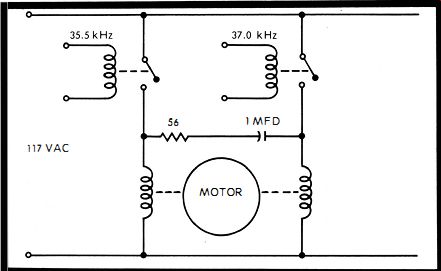
Fig. 94. A phase-shift synchronous motor circuit is so designed that the motor
ca n be rotated both ways.
Testing the Remote Control Receiver
No. 138: SIMPLE ALIGNMENT, REMOTE RECEIVER
The alignment of the typical remote receiver described previously is quite easy. Using a known good transmitter or an accurately calibrated audio generator, each function in the receiver is turned on, one after another.
A VTVM is attached across the common emitter resistor (Fig. 95 ) in each stage. During actuation by the transmitted signal, each input coil is touched up for maximum voltage on the VTVM. The amount of voltage is small and the low scale must be used. At exact resonance, the emitter bias voltage will be the highest.
No. 139: A MOTOR WON'T START
When one motor won't start, yet the rest of the functions are operating normally, the trouble is immediately isolated to the driver circuit that is supposed to actuate the motor or the motor itself. The master circuit that amplifies all of the signals is cleared since the other circuits are still operative.
A signal corresponding to the frequency of the dead circuit is applied to the base of the driver transistor. For example, it could be a 40-kHz tuned circuit. Accordingly, 40-kHz signal is applied to the base.
One of two things will happen. Either the relay and motor will be actuated, or not. If the motor does start, the trouble is isolated to the base input circuit, including the coupling capacitor and the tuned 40-kHz transformer. These two components should be tested, as well as the connection and other components in the base circuit if there are any.
Should the relay not be actuated with the injection of the 40-kHz base signal, either the transistor or one of the output components is the indicated troublemaker-the transistor, the collector filter capacitor, the relay or the motor itself. A one-by-one test of each is then in order.
No. 140 : MOTOR STARTS BUT WON'T RUN UNLESS BUTTON IS HELD DOWN
Some motors are designed this way, but other motors are designed to run and complete a function before turning off.
For instance, a motor might perform a tuning function. When you press the transmitter button, the motor starts running and continues until a station is tuned in. Then, the signal from the station cuts off the relay and the motor stops. When such a motor just turns on, and as you let up on the button it stops, there is a malfunction. There is usually a hold switch on the motor. Check the motor and its input components.

Fig. 95. This type of remote relay driver is easily aligned by connecting
a VTVM across the emitter resistor and tuning for a peak reading.
No. 141: MOTOR RUNS PAST DESIRED STOPS
Some motors are designed to keep running until a certain spot is reached. For instance, a motor turning a VHF tuner is kept running until it arrives at a specific spot such as the VHF position. If the motor runs past the desired location, look for the wafer switch that controls that function and check it for opens or breaks.
No. 142 : MOTOR STOPS PERMATURELY
An example of this is a VHF tuner that, instead of passing up unused channels, keeps stopping at every channel. There is a hold switch on the motor and a wafer switch "that routes the control voltages to -provide this service. They cause this problem when they are misadjusted or defective.
No. 143 : MOTOR WON'T GO BOTH WAYS
Some functions of a remote receiver require that a motor go both ways. There is usually a separate button for each direction. Let 's call the two functions up and down.
If the motor won't go both ways, but will go one way, then it is known that the motor is good, the motor's reversing switch is good, as well as the circuit function. For instance, if up is working and down isn't, the up circuit is good.
Run a jumper from the working circuit collector to the non-working collector. Then press the button. If the circuit works then, the relay is good but the transistor or its components are defective. Check them out. If it won't work, the relay is defective and needs repair or replacement.
No. 144 : NEITHER UP OR DOWN WORKS
When both up and down are inoperative, there is a choice.
Either both circuits have become defective at the same time, which is highly unlikely, or a circuit common to both is defective. Assuming a known good transmitter is being used, the wafer switch and connections become the only suspect.
No. 145 : MOTOR WON'T GO BOTH WAYS (ALTERNATE)
If it is more convenient, this trouble can be isolated by injecting an appropriate signal into the base of the indicated circuit. If the motor then goes in the direction it hadn't been, the base circuit is defective and the input capacitor and tuned transformer are the suspects.
When the motor still won't turn in the desired direction, the transistor, collector filter capacitor and relay have to be checked.
No. 146 : STEPPER RELAY Won’t WORK
Stepper relays are important remote control components.
With it, a control can be moved slowly step by step until a desired correction is achieved. This can be used in a model airplane to make slow careful adjustments so accurate steering, without over steering, can be obtained. The common radio and television use is the gradual increase of volume.
When the transmitter button is pressed, a relay is actuated, which turns on a motor and advances a ratchet one step. In a model airplane, a relay is actuated, permitting a rubber-band motor to turn a few times and then stop.
Every time the button is pressed, the relay allows one step.
The test is similar to the ones we have discussed. An appropriate signal is applied to the base of the driver transistor.
If the relay actuates, the base circuit, the input capacitor and the tuned transformer are suspects. When the relay still doesn't actuate, the transistor, collector filter capacitor and relay itself should be checked.
No. 147: DEAD REMOTE RECEIVER
Assuming a known good transmitter is being used and none of the relays are being actuated at all, the trouble is indicated to be in the input transducer of the receiver, the receiver amplifier stages or the receiver power supply. The transducer is best tested by substitution. Once it is determined good, voltage readings should be taken in the power supply and amplifiers. The + 150-volt bias to the transducer should be checked ; also the + 15-volt power for the transistors. If one or both is missing, the power supply is the trouble. If they are both present, the power supply is deemed good and the amplifiers are next for investigation.
Test all of the amplifiers up to and including the amplifier output transformer which is linked to all the individual tuned transformers.